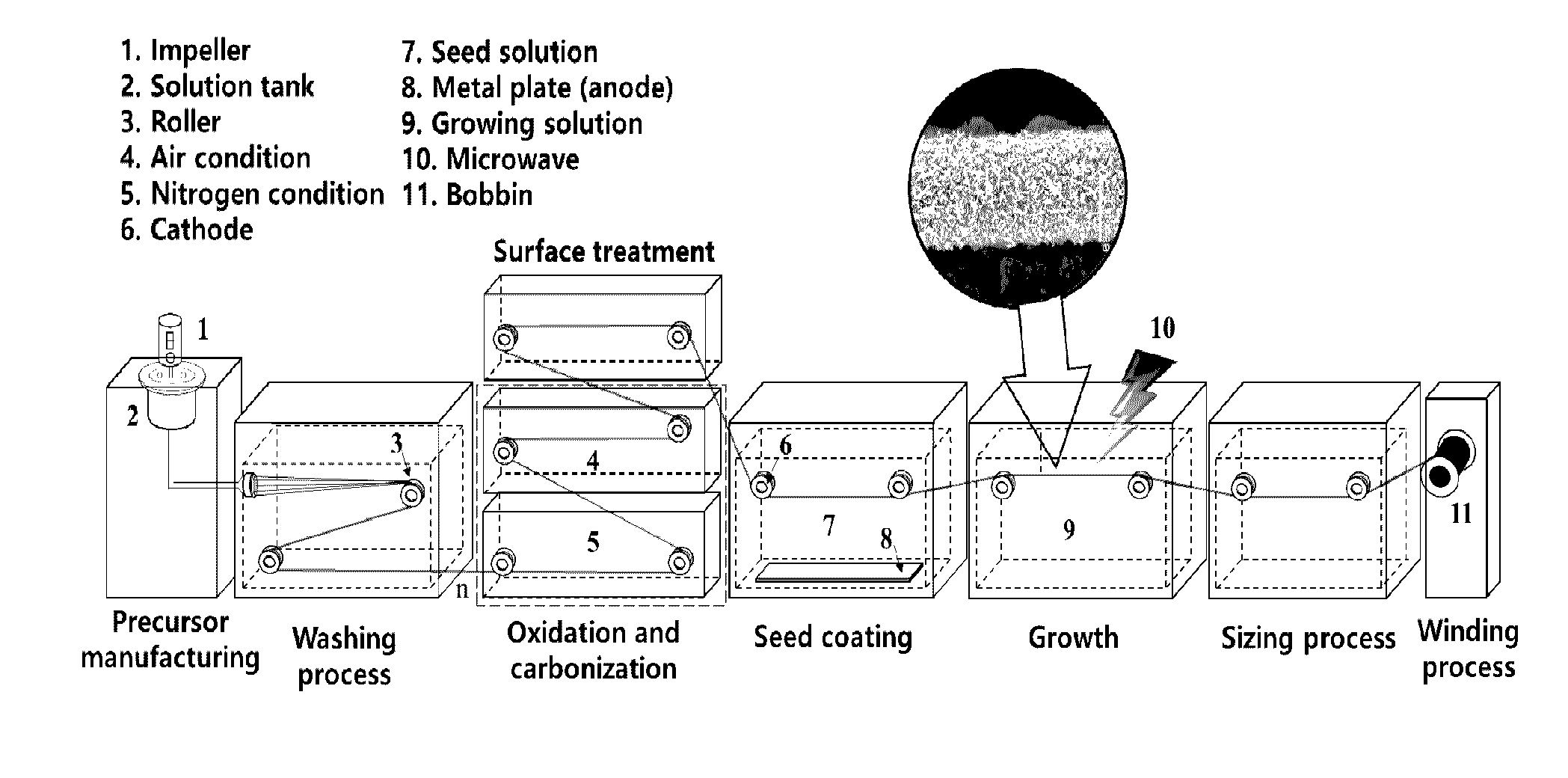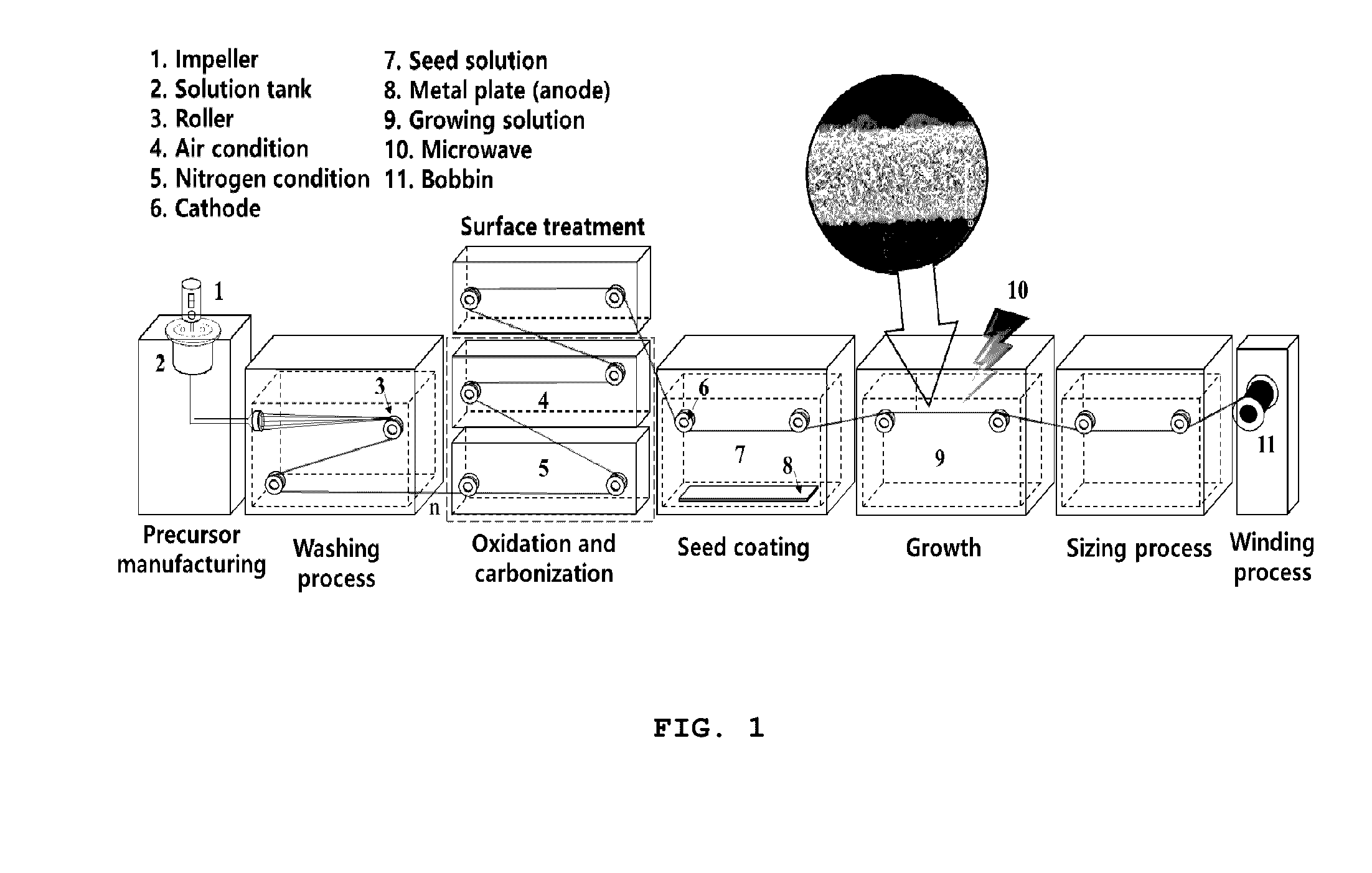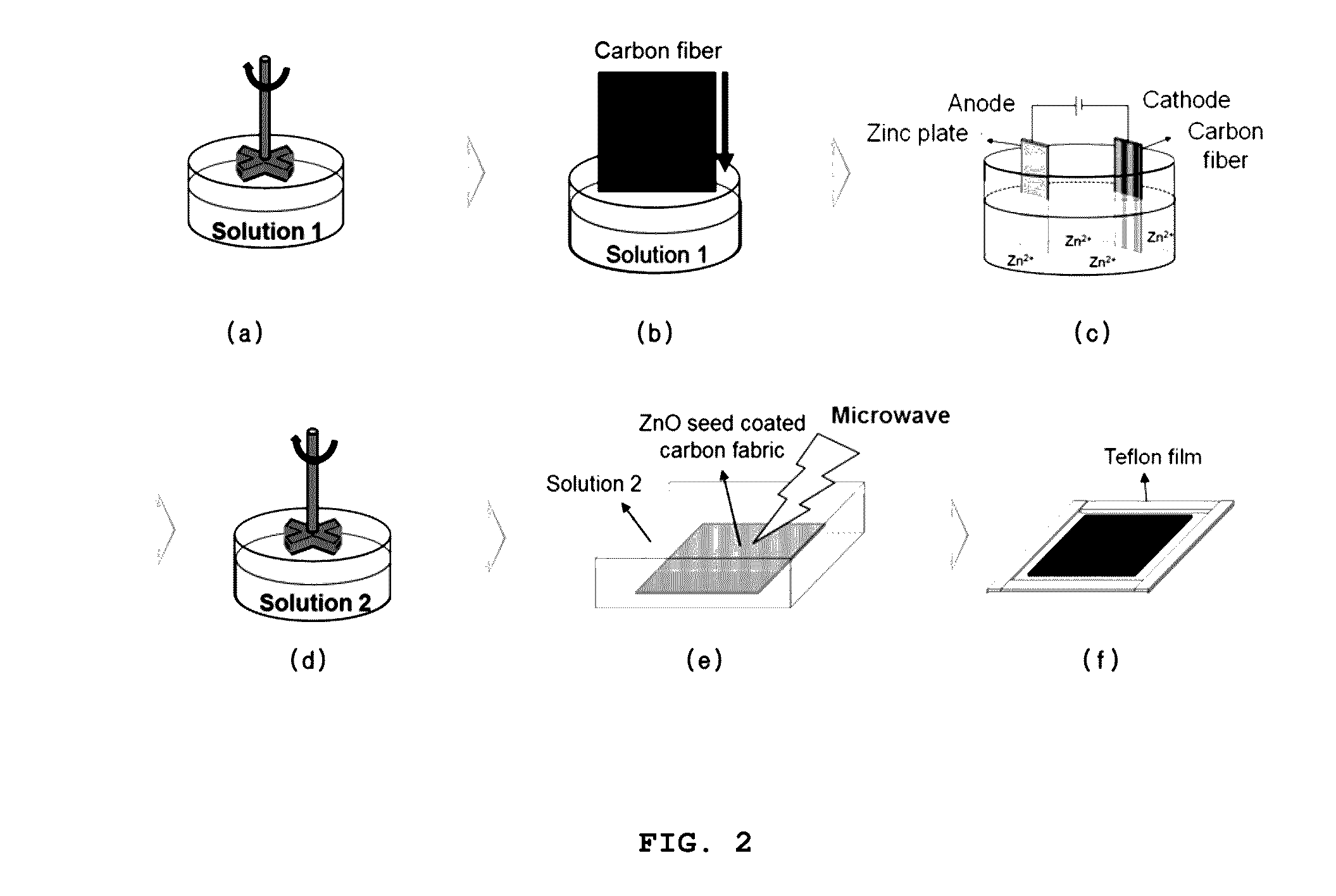Manufacturing method for carbonfiber grown metal oxide
a manufacturing method and technology for metal oxide, applied in the field of carbon fiber manufacturing, can solve the problems of poor bonding strength between carbon fibers and metal oxides, long manufacturing time, and limited application range of conventional fiber-reinforced composite materials, and achieve the effects of improving process energy efficiency and production efficiency, reducing process time, and improving interfacial shear stress
- Summary
- Abstract
- Description
- Claims
- Application Information
AI Technical Summary
Benefits of technology
Problems solved by technology
Method used
Image
Examples
preparation example
Production of Metal Oxide-Grown Carbon Fibers
example 1
[0088]With reference to FIG. 2, a process for manufacturing metal oxide-grown carbon fibers of Example 1 will be described in detail.
[0089](a) 0.1M zinc acetate dihydrate and 0.00285M zinc hydroxide (volume ratio=18:7) were dissolved in 50° C. water to prepare a solution for forming a metal oxide seed layer (solution 1).
[0090](b) Carbon fibers were immersed in the prepared solution for forming a metal oxide seed layer.
[0091](c) Using the solution for forming a metal oxide seed layer as an electrolyte, carbon fibers were connected to a cathode and a zinc plate was connected to an anode, a current of 0.06 Å was applied for 48 seconds to apply a charge density of 0.4 C / cm2 (0.06 Å, 48 s) to form a metal oxide seed layer.
[0092](d) 0.025M zinc nitrate hydrate and 0.025M hexamethylenetetramine (HMTA) were dissolved in water to form an aqueous solution for growing metal oxide (solution 2).
[0093](e) The metal oxide seed layer-formed carbon fibers were immersed in the prepared aqueous soluti...
example 2
[0095]With reference to FIG. 3, a process for manufacturing metal oxide-grown carbon fibers of Example 2 will be described in detail.
[0096](a) 0.1M zinc acetate dihydrate and 0.00285M zinc hydroxide (volume ratio=18:7) were dissolved in 50° C. water to prepare a solution for forming a metal oxide seed layer (solution 1).
[0097](b) Carbon fibers were immersed in the prepared solution for forming a metal oxide seed layer.
[0098](c) Microwave was irradiated at 700 W for 10 minutes to carbon fibers immersed in the solution for forming a metal oxide seed layer to form a metal oxide seed layer.
[0099](d) 0.025M zinc nitrate hydrate and 0.025M hexamethylenetetramine (HMTA) were dissolved in water to form an aqueous solution for growing metal oxide (solution 2).
[0100](e) The metal oxide seed layer-formed carbon fibers were immersed in the prepared aqueous solution for growing metal oxide and microwave was irradiated at 700 W for 10 minutes to form zinc oxide (ZnO) nanorods (NRs).
[0101](f) The ...
PUM
| Property | Measurement | Unit |
|---|---|---|
| frequency | aaaaa | aaaaa |
| temperature | aaaaa | aaaaa |
| temperature | aaaaa | aaaaa |
Abstract
Description
Claims
Application Information
 Login to View More
Login to View More - R&D
- Intellectual Property
- Life Sciences
- Materials
- Tech Scout
- Unparalleled Data Quality
- Higher Quality Content
- 60% Fewer Hallucinations
Browse by: Latest US Patents, China's latest patents, Technical Efficacy Thesaurus, Application Domain, Technology Topic, Popular Technical Reports.
© 2025 PatSnap. All rights reserved.Legal|Privacy policy|Modern Slavery Act Transparency Statement|Sitemap|About US| Contact US: help@patsnap.com



